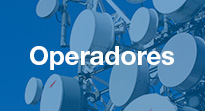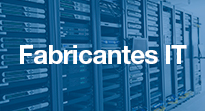Today, talking about the Internet does not suggest the air of change suggested a decade ago. We see every day an army of mobile phones, computers, tablets, smart watches (which remind you of your childhood friend's birthday that you have not seen for three years). Internet is so internalized in our daily lives that sometimes we are not aware that it is the first thing we greet in the mornings and the last thing we see before going to sleep, like the touching romance of Theodore in Her.
Today we could say that the 2.0 communication can arrive (if it has not already done so) to unseat the dog as a pet (in this case it would be the object of company), favorite by the human being. Even if your mobile phone does not welcome you to get home, we have to be aware that we could not live without holding the big box of knowledge in our hands.
The way we communicate, relate, and above all, the way we want to be perceived by others has been changing thanks to our great friend. Our friend in charge of changing our lives, of making it more bearable and simpler. - Drama aside - Viatek Group wants to make a brief review of the evolution of the data in the network, the way of ranking them, the attribution of importance and the classification of them. To do this, they have reviewed terms that are right now at the top of the cusp in the business field, such as: el Big data, IoT, Edge Computing, Machine Learning and smart cars.
Going back to the 2000, when the term began to sound Big data, which is now one of the great allies in the companies. It is responsible for describing a large volume of data, structured and unstructured. It does not emphasize the data, but in the managements that the organizations carry out with them. This system, with a study behind it, can provide consistent information for the creation of insights that help generate better decisions for the company in the face of a good business strategy.
By IoT or conventionally known as the Internet of Things, from the English Internet of things, helps companies manage security and big data, a term previously described.
It consists of connecting the "real world" with the virtual one thanks to the IoT platforms that are in the cloud, linking devices with backend systems through a more advanced connection of devices, systems and services beyond the traditional M2M.
In 2013, Cisco creates a so-called “connection counter” that consists of estimating the number of “things” connected from July 2013 - 2020. According to a Cisco IBSG prospecting study published in April 2011 (see figure 1), they estimate that the IoT will produce revenues of 7,5 trillion in 2025.
The first impression of the devices that connect the IoT is usually good although they have a problem: they collect information, they send it to the cloud, but they do not do anything with it. It is the data centers that process it in order to obtain a series of conclusions. This is when the next term comes up Edge Computing, which is responsible for granting autonomy to the devices and makes them, vulgarly speaking, smarter since they analyze and process the data in short periods of time. What is ultimately a saving of time that leads to greater long-term profitability for the company.
Another of the great advantages it brings is security, because there is less data in the cloud, less vulnerable the environment becomes.
As we already know, information is power, therefore Big Data and Machine Learning They can be great allies to analyze large amounts of data efficiently and in a short time. With automatic learning or machine learning the algorithms themselves generalize knowledge and induce it through behaviors that they observe.
In order for the learning that the algorithms generalize to be accurate and effective, they have to feed on data, and the more data they manage the better. Since thanks to it the processes that are obtained are more precise, here comes into play the Big Data.
Linking with the above, can not go unnoticed the term that is creating great expectation today: smart cars. Regarding these, we can emphasize that they do not rely on their work to collect information that is processed in real time to ensure a more effective and safe driving. According to an Intel study, an autonomous car can generate 4 TB of data per day. Reaching between 20 and 40 Mbits per second plus radar Kbits.
These terms, after all, do not cease to be a reflection of the pace at which current society advances. The question is, what will the 2019 surprise us with?



















